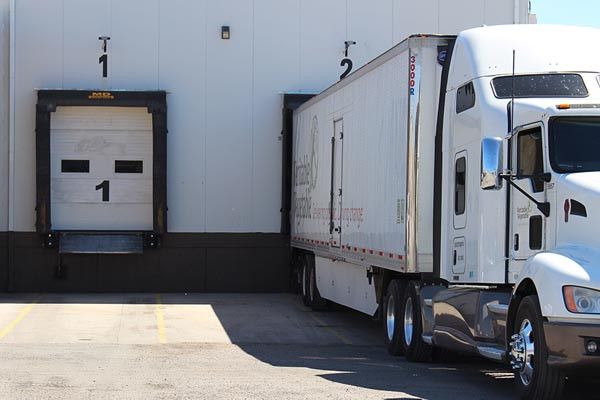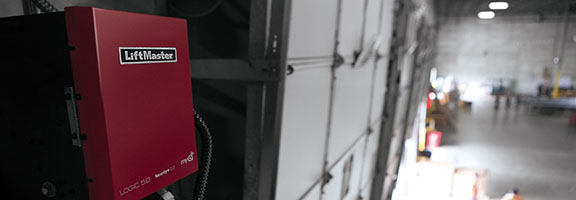Speccing for Cold Storage
The loading dock door has always been one of the biggest sources of energy loss in a cold food storage facility. Even when properly balanced, a manually operated door can drift up after being closed, opening a gap at the bottom that lets conditioned air leak to the outside.
Cold air escaping through gaps around the door can represent an annual loss of

thousands of dollars, but that's not even the worst problem. It's not unusual for workers to leave a manually operated door open between deliveries. Tests have shown that a single door left open for just three minutes per day will cost the average facility an additional $3300 per door.
In addition to higher energy bills there's also the issue of food safety. A mere 1/4 inch gap can put the facility out of compliance with the Food Safety Modernization Act (FSMA) by causing enough energy loss to partially thaw food in the dock area, while also creating a path for pests and pathogens from outside to get in. The facility will be subject to regulatory compliance fines and may have to throw food away.
To prevent these losses, the architect's project specifications need to address all elements of the doorway. These include:
Door types. Minor hits by forklifts are common in all loading docks. In a standard door, this can misalign the rollers and panels, and open up gaps in and around the door. By contrast, an impactable door is designed to be quickly reset after an impact.
Door levelers. Pit-style dock levelers can prevent doors from sealing tight at the bottom when closed. Instead, consider modular dock bridges. When not in use, dock bridges fold upright inside the opening, allowing the door bottom to make a tight seal against the floor. As a bonus, they're easier to clean than pit levelers and protect closed doors from forklifts.
Shelters and restraints. A good dock shelter will form an air seal around the top and sides of the trailer and will be rugged enough to withstand trailer collisions without damage. The shelter should be combined with a vehicle restraint that keeps the trailer firmly seated against the dock seal.
Door operators. A motorized commercial door is a must in any cold storage operation. The operator makes it less likely that doors will be left open while also preventing upward drift, which means no gaps will appear at the bottom of the closed door.
A connected LiftMaster Logic 5.0 Commercial Door Operator and accessories deliver an effective solution for facility managers. Using a smartphone, table, or computer they can check a door’s current status, as well as how long it has been opened or closed. Besides enhancing food safety, this secure monitoring ability also tells managers how long it’s taking to load and unload trucks, information that can help them devise measures to increase dock efficiency.
The point is that with today's products and technologies, there's no reason for cold air to be blowing out the door. An automated door operator, along with the other elements, can lower energy bills while also protecting food stored in the dock area.

